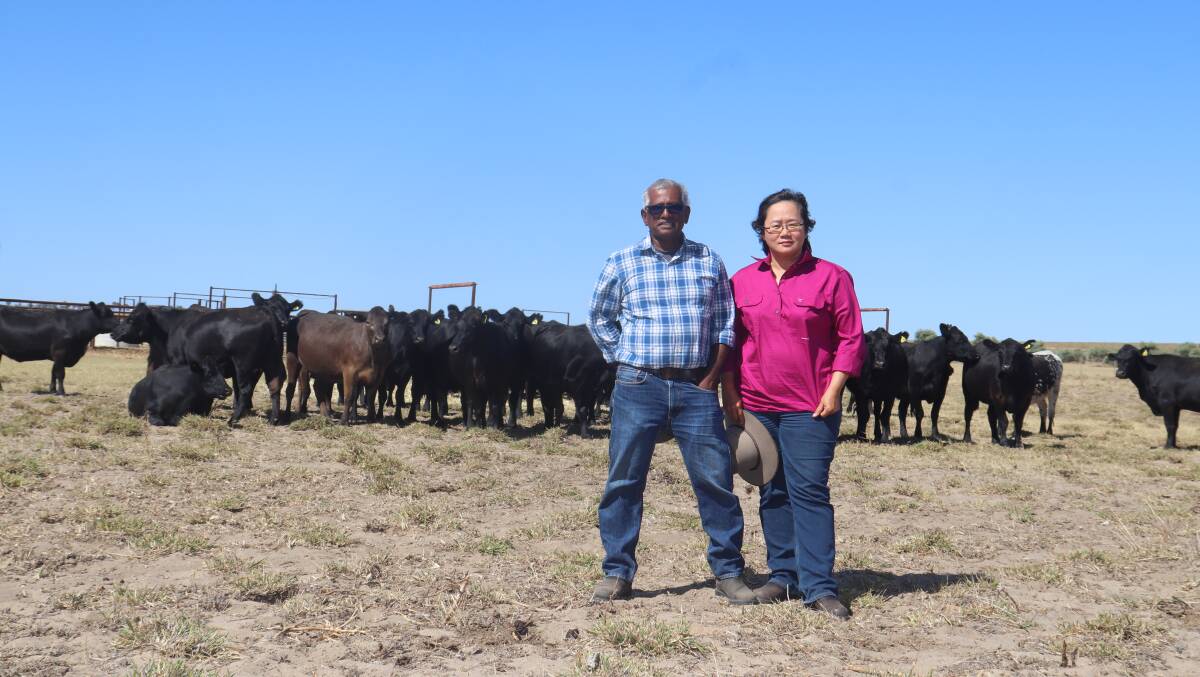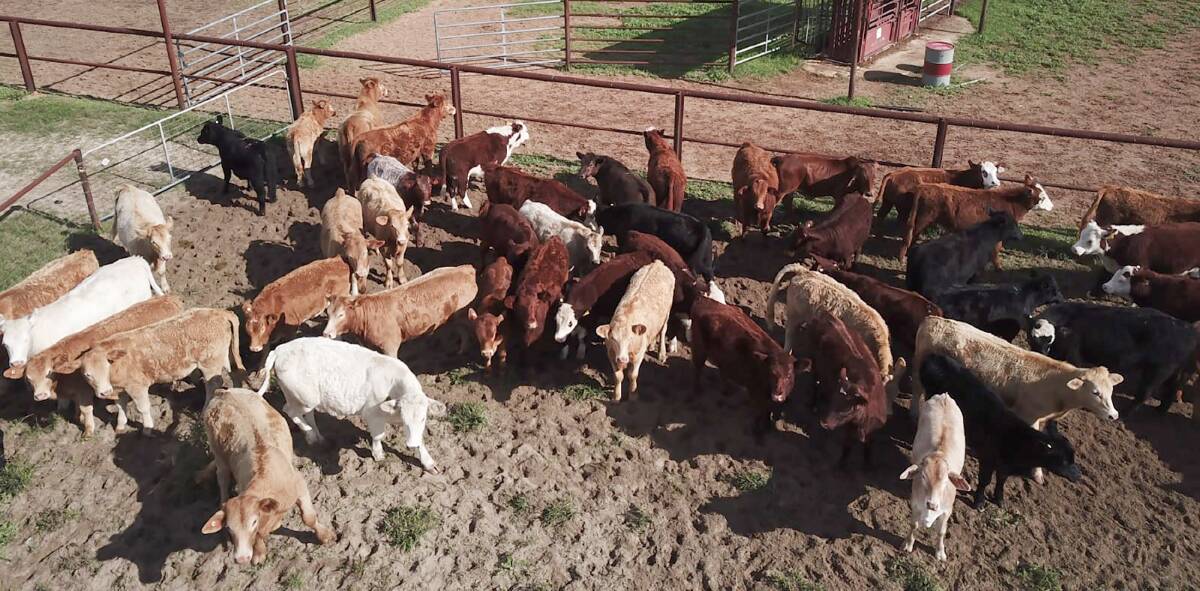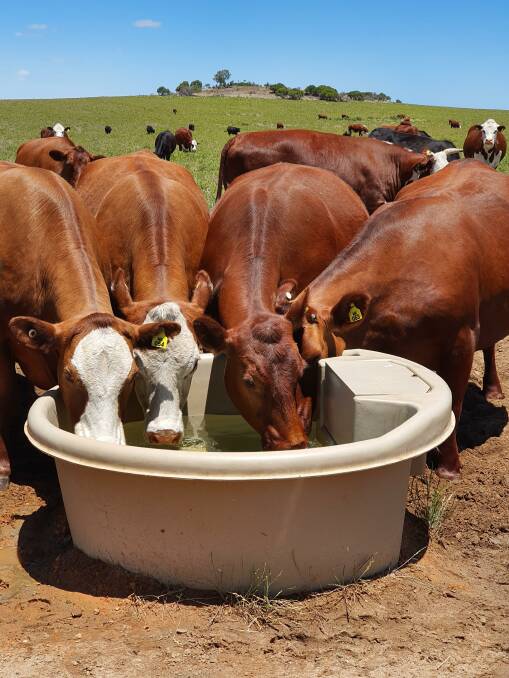
BEING an executive chef by trade, a polyglot, an innovator and tsunami survivor, Sase Sangaran is your man and has proven he can be a farmer too.
Farming alongside his wife Karen Tan at their property Woodcote East at Geraldton, they are the ultimate dynamic duo.
- Subscribers have access to download our free app today from the App Store or Google Play
After many years of travel and dedicating themselves to a tireless corporate lifestyle, while opening hotels in multiple countries, the pair moved to Australia for a better education for their son Keshaan and decided farming could be a potentially perfect fit.
Combining Malaysian-Indian and Malaysian-Chinese ethnicities and life experiences with their farm knowledge, the pair has managed to create a positive outlook on farming.
An holistic farming approach and incorporation of technology into their enterprise over the past six years has proven to be a saviour and has positively impacted their 1100 hectare Mid West property.
With Mr Sangaran's chef's wit up his sleeve and Ms Tan's entrepreneur and family farming background in Malaysia, they decided beef cattle farming was suitable for their Australian lifestyle.
Having cooked beef more times than he could count, Mr Sangaran insisted that being a good chef is knowing how to cook the meat itself and appreciating and acknowledging the efforts that take place beforehand.
"The paddock-to-plate motto Australia has is really appealing to me," Mr Sangaran said.
"I've experienced the plate side of this and I have loved every minute of the paddock side I've experienced so far too.
"I know what chefs expect on the other end."
They have challenged themselves and found comfort in knowing they are assisting the cattle industry to raise cattle to feed Australia and the world.

Woodcote East is home to 135 Black Angus and Hereford breeders, 130 weaners, bulls from Gandy Angus, Manjimup, Kapari Angus, Northampton, and Hereford bulls from Quaindering Poll Hereford stud, Williams, to make a total team of seven bulls, comprising five Angus and two Herefords.
The Hereford and Black Angus genetics seem to fit hand-in-hand with the outlook the pair has on the enterprise and although the two breeds aren't the most popular in the area, they seem to be thriving.
"They have adapted really well to our property and seem to be handling the climate we have here quite well," Ms Tan said.
"Bos Taurus cattle, especially black Angus, are always in high demand, which is why we prefer them over the pastoral breeds.
"Black Angus cattle have an extremely high rate of stayability and fertility and are prominent for maternal traits and high net return."
The couple said the Hereford breed was an excellent one too.
"They are a great maternal breed, very gentle and calm for easy management," Mr Sangaran said.
"We crossbreed Black Angus with Hereford too.
"Crossbreeding within our herd can make better use of breed selection by combining breeds with different strengths to produce a final progeny with desired characteristics from both breeds."
A complete natural breeding program is the preferred mating method.

"The young heifers are at least 350 kilograms before joining them with the bulls," Mr Sangaran said.
The heifers and the breeders are both joined in July in two separate mobs.
The mating period is about nine weeks, providing enough time for three heat periods and makes the calving period much easier.
"With the help of our veterinarian, we conduct a pregnancy test two months after mating, this enables us to identify the empty cows and calculate the conception rate," Mr Sangaran said.
"Our conception rates are, on average, 85-90pc."
Visual appraisal and Estimated Breeding Values (EBVs) are taken into consideration when selecting bulls.
"We select low birthweight bulls to join with the heifers for easy calving," Ms Tan said.
"We calve down in May, starting about Anzac Day," Mr Sangaran said.
READ MORE:
"Calving during this time of the year is suitable because of the cooler weather and readily available green feed."
Post-calving cattle husbandry practices are carried out by administering a backline, vaccination and castration, followed by the procedure of identification tagging such as the National Livestock Identification System and visual tags.
"Calves are generally weaned at about 180kg because they have a better weight gain and we find it benefits their health too," Mr Sangaran said.
The heifer progeny with suitable traits for the future breeding herd are retained as replacements and marked accordingly with a visual tag to avoid inbreeding.
"The steers and remaining heifers are kept on the property for further fattening before we sell them," Ms Tan said.
"The ideal weight for weaner sales is 250kg-300kg and for feedlots are 380kg and above."
Three years ago, Ms Tan and Mr Sangaran changed their business module from purely trading to breeding cattle to reduce the business risks of significant cattle price fluctuations.
The cattle are constantly weighed at least once a month to monitor their weight gain and wellbeing.
"We tried a different approach to tame the cattle by playing music to them, so far they have responded well and seem to enjoy it," Mr Sangaran said.
Technology is also something that has been introduced in their farm management system periodically.
"We use Farmbot and Farm Deck Apps to ease our farm management," Mr Sangaran said.
Farmbot digitally monitors the water tank and the submersible pump activity.
"This means we don't have to constantly check the tanks and we can check it from our devices from anywhere in the world," Ms Tan said.
"It shows you the near real-time alert over your water tank level.
"It is really efficient in the way of management and time saving, it reduces labour costs and hours manually checking."
Farm Deck is another significant tool used to monitor all livestock inventory and movement within the property, its accuracy and digital data keeping is a major benefit for the pair.
"Farm Deck has a lot of useful features, from the farm map, rotational grazing management log, treatment log and dosage log, right down to the treatment given, what date it was administered and by who," Mr Sangaran said.
"The livestock log will tell us each mob size, breed and where they are on the property.
"You can also assign jobs and tasks with the task manager and it will tell you when they are completed and when cattle are moved you upload that data and everyone is notified through the app."
The app also assists in the pasture management.
Every year about 100 hectares of inter row crops are planted, usually either cereal, rye or forage oats to be a ground cover and organic matter for the soil.
"We strive to practice regenerative farming to improve our pasture," Ms Tan said.
Cell grazing is another big part of the regenerative farming approach and sustainable soil management.
"We believe soil management is key - if you don't look after it nothing will grow well and the cattle won't have enough feed," Mr Sangaran said.
To ease the paddock management, they have converted a large 160ha paddock into 12ha singular cells.
The cell grazing paddock has an electric fence that is generated by solar power.
"It was too hard and inefficient to move the cattle to and from that paddock and resulted in a really uneven grazing," Ms Tan said.
In the winter months a cell can hold 300 cattle and in the summer it holds about half that number.
"The amount of time they spend in a cell is dependent on the season," Mr Sangaran said.
"This time of year the cattle will spend two days in a cell and be moved every third day."
The pair said it took on average about a month to complete a whole circuit of the cells which gave the perennials a rest before they are grazed again.
"Cell grazing has improved our production by 40 per cent, having a high stocking rate assists the pasture to grow better," Mr Sangaran said.
About 376ha of arable land is cropped annually on a rotation between lupins, canola and wheat.
"Last season they cropped noodle wheat and in the upcoming season it will be lupins - the cropping operation is carried out by share farming program," Mr Sangaran said.
The couple continues to broaden its knowledge and open its minds to both regenerative and traditional farming methods.
"We analyse and digest the information we learn and then digitalise and modernise it and trial it to see what will best suit our property," Ms Tan said.
Attending seminars and forums about livestock and soil carbon, along with field walks, certified in farm, livestock and pasture management study and involving themselves in the local community means that the farming pair are always learning new information about the industry.
"If we have the opportunity, we would like to transfer our skills and guide the farmers in Malaysia in establishing good farming practices and assist them to do the same as us," Mr Sangaran said.

